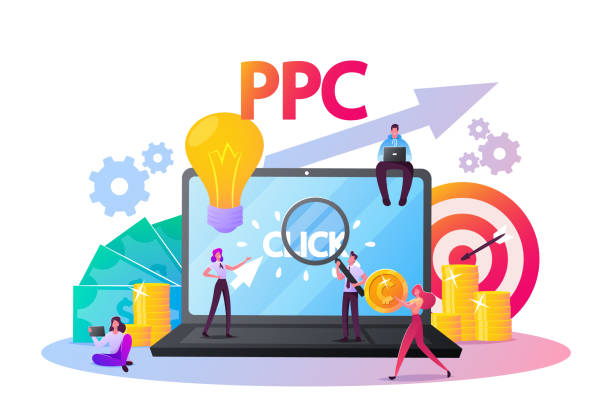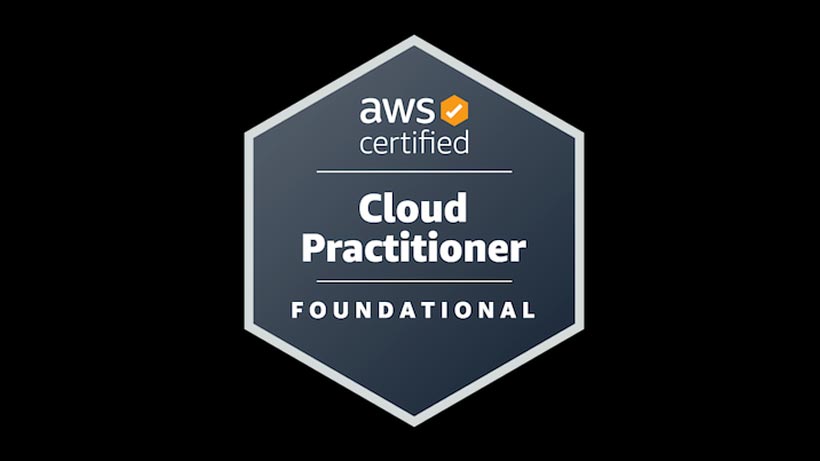Pay-Per-Click (PPC) Advertising: How to Create Effective Ad Campaigns
Published

Pay-Per-Click (PPC) advertising is a form of online marketing in which advertisers place ads and pay a fee each time a user clicks on the ad. The ads are usually on search engines or Social-Media platforms and can be created in various formats such as text, images, video or interactive ads.
The way PPC advertising works is based on an auction model. Advertisers bid on specific keywords or audiences to place their ads at the top of search results or in social feeds. Bids are evaluated based on various factors such as the ad's relevance to the keyword, advertising budget, and bidding strategy.
When a user clicks on an ad, they are redirected to a specially created landing page where they receive more information about the product or service being advertised. The goal of PPC advertising is to maximize conversion rates and increase return on investment (ROI) by creating relevant and engaging ads that result in a higher number of clicks and sales.
What advantages does PPC advertising offer compared to other forms of advertising?
PPC advertising offers a number of advantages over other forms of advertising, including:
- Targeted Advertising: PPC advertising allows advertisers to target their ads to a specific audience or keyword. This allows companies to ensure that their ads are only shown to potential customers who are interested in their products or services.
- Instant Results: Unlike SEO or others Marketing strategies PPC advertising delivers instant results. Once the ad runs, it can engage potential customers and lead to conversions.
- Cost Control: PPC advertising allows businesses to closely control their expenses since they only have to pay for clicks on their ads. Companies can increase or decrease their advertising budget depending on the success of the campaign.
- Measurable Results: PPC advertising provides a wealth of data and metrics that allow companies to accurately measure and optimize the success of their campaigns.
- Flexibility: PPC advertising is flexible and can be quickly adapted to the changing needs of businesses. Companies can adjust and optimize campaigns based on real-time data to achieve the best possible results.
How to choose the right keywords for a PPC campaign?
Choosing the right keywords is crucial to the success of a PPC campaign. Here are some steps that can help in choosing the keywords:
- Audience research: Research what keywords your audience uses to search for products or services like yours.
- Use keyword tools: Use keyword tools like Google Keyword Planner to create a list of relevant keywords. These tools also provide information about search volume and competition for each keyword.
- Check keyword options: Consider the different options for keywords such as Phrase Match, Broad Match, or Exact Match. These options have different effects on the reach and relevance of your ads.
- Exclude negative keywords: Use negative keywords to exclude specific keywords that are not relevant to your campaign. This can help protect your ads from irrelevant clicks.
- Competitor analysis: Check what keywords your competitors are using and whether you can adjust or improve their strategies.
- Keyword grouping: Organize your keywords into thematic groups to better tailor your ads and landing pages to the interests of your target audience.
It's important to regularly check which keywords in your campaign are actually driving conversions and optimize your keyword list accordingly for greater effectiveness and profitability.
How do you set an effective PPC budget?

Those : istockphoto.com
Setting an effective PPC budget depends on several factors, such as competition in your industry, bids for relevant keywords, and desired campaign size. Here are some steps that can help set a PPC budget:
- Keyword research: Research the cost per click for the keywords relevant to your campaign to get an idea of the expected costs.
- Setting Goals: Set your goals for the campaign, such as number of clicks, conversions, sales or ROI.
- Forecasting: Create forecasts for the number of clicks, conversions and costs based on your targets.
- Setting a test budget: Start with a test budget to measure and optimize campaign performance.
- Monitoring and Adjusting: Regularly monitor campaign performance and adjust your budget to ensure it is adequate to achieve your goals.
Another important factor in setting an effective PPC budget is monitoring the campaign to ensure the budget is used effectively and unnecessary costs are not incurred. It is also important to regularly optimize the campaign to ensure it remains effective and continually improved.
What types of ads are there in PPC advertising and which ones are best for which goals?
There are different types of ads in PPC advertising, and each type is best suited to specific goals. Here are some of the main types of ads:
- Search Ads: These ads appear on search engine results pages (SERPs) and appear when a user searches for specific keywords. Search ads are ideal for generating traffic and driving conversions on the website.
- Display Ads: These ads appear on websites in the Google Display Network and are visually appealing to engage users and draw attention to your brand. They are best for brand awareness and reach.
- Shopping ads: These ads appear on Google Shopping pages and product search results and show information such as the price, image, and name of the product. They are best suited for eCommerce businesses and can directly lead to sales.
- Video Ads: These ads appear on YouTube or other video platforms and can be displayed in various formats such as skippable or non-skippable ads. They are best for brand awareness and reaching audiences through video content.
Depending on the goal of the campaign and the type of business, different types of ads can be used. If the goal is to increase awareness of your brand, display ads are a good choice. However, if you want to drive sales, Search Ads or Shopping Ads may be a better choice. Video ads are ideal for reaching a wide audience and generating engagement for your brand.
How to measure and analyze the performance of a PPC campaign?
The performance of a PPC campaign can be measured and analyzed using various metrics. Here are some of the key metrics:
- Click-through rate (CTR): The click-through rate indicates the ratio of clicks on an ad to ad impressions. A high click-through rate means the ad is relevant and appealing to the target audience.
- Conversion rate (CVR): The conversion rate indicates how many people took a desired action on the landing page after clicking on an ad. A high conversion rate is an indicator that the ad and the landing page are well aligned.
- Cost per click (CPC): Cost per click indicates how much a campaign spends on average for each click on an ad. A low cost per click means the ad is cost effective.
- Return on Investment (ROI): Return on Investment indicates how much a company earned for each PPC campaign spent. A high ROI means the campaign is profitable.
To measure and analyze the performance of a PPC campaign, these metrics should be monitored and continually optimized. Most PPC platforms offer campaign performance monitoring and analysis tools that companies can use to improve the effectiveness of their campaigns.
How to optimize the ads in a PPC campaign to achieve a higher conversion rate?

Those : istockphoto.com
There are several ways to optimize the ads in a PPC campaign and achieve a higher conversion rate. Here are some tips:
- Use relevant keywords: Make sure the keywords in your ad are relevant to the search topic. Well-thought-out keyword research is key to creating ads with high conversion potential.
- Create engaging ads: Make sure your ads are engaging and grab the attention of potential customers. Use clear, concise language, an attractive headline, and include an eye-catching description and images.
- Use targeted landing pages: Make sure your ads link to relevant landing pages that are specifically optimized for the search topic. Use clear call-to-actions on the landing page to motivate potential customers to purchase or register.
- Optimize your ads for relevance: Regularly review and adjust your ads to ensure they are relevant to the search topic and audience. Use ad extensions to add additional information such as location, phone number, and links to relevant pages on your website.
- Test different ads: By testing different ads, you can find out which ones work better and get higher conversion rates. Test different headlines, descriptions, and images to see which combination works best.
What role does the landing page play in a PPC campaign and how do you design it optimally?
The landing page plays a crucial role in a PPC campaign as it creates the first impression on potential customers and determines whether they stay on your website or not. A well-designed landing page can significantly increase conversion rates. Here are some tips on how to design an optimal landing page:
- Consistency: The landing page must create a seamless connection between the ad and the website. It should use the same tone and visuals as the ad to keep users' attention.
- Relevance: The landing page should offer relevant content that is tailored to the needs of the target group. Avoid general information and provide specific solutions to their needs.
- Clarity: The landing page should be clear and simple to allow for quick and easy navigation. Make sure that the user immediately understands what the page is about, what they can do and how they can do it.
- Compelling call to action: A clear and compelling call to action is essential to achieve a higher conversion rate. Use clear and eye-catching buttons with a clear prompt, such as “Buy Now” or “Register Now”.
- Mobile optimization : Since many users use mobile devices today, it is important to ensure that the landing page displays optimally on all devices. Optimize the site for mobile devices to ensure a seamless user experience.
How to use geographic targeting in PPC campaigns?
Geographic targeting is an important aspect when planning and implementing PPC campaigns. It allows advertisers to target their ads to specific geographic regions such as countries, states, cities or zip code areas. This is especially important for companies that want to sell their products or services to a local audience.
There are several ways to use geographic targeting in a PPC campaign:
- Location targeting: This only shows ads to users who are in a specific geographical region. This is particularly useful for companies with physical stores or for local service providers.
- Geographic bid adjustment: Advertisers can also make bid adjustments for specific geographic regions. For example, if a company has more potential customers in a certain region, it can increase the bid for that region to ensure that the ads are preferred to those users.
- Location exclusion: Advertisers can also exclude certain geographic regions to ensure their ads only appear to relevant users. For example, if a company doesn't offer international delivery, it may exclude ads to users outside the country.
Through targeted geographic targeting, advertisers can optimize their PPC campaigns and ensure their ads are shown to the right users, which can result in a higher conversion rate and ROI.
What are the current trends in PPC advertising and how do they influence the future of advertising in general?

Those : dreamhost.com
There are several trends in PPC advertising that are currently being observed and will continue to play an important role in the future. Some of these trends are:
- Automation: By using artificial intelligence and machine learning, advertisers can automate and optimize their PPC campaigns. This includes automatic bid adjustment, ad creation and keyword research.
- Audience targeting: Audience targeting is becoming increasingly important as advertisers seek to reach their audiences in a more precise way. This includes using third-party data to create audiences based on demographics, behaviors and interests.
- Ad Formats: New ad formats, such as video ads, augmented reality ads, and interactive ads, are becoming increasingly popular. These ad formats provide consumers with a better experience and can result in higher conversion rates.
- Voice Search: With the increasing popularity of voice-controlled devices such as Google Home or Amazon Echo, voice search is also becoming increasingly important for PPC advertising. Advertisers must tailor their ads and keywords to be found in voice searches.
- Privacy and Security: With consumers' increasing concerns about their privacy rights and the security of their personal information, advertisers must be aware of how to protect their PPC campaigns through the use of privacy regulations and encryption technologies.
Overall, PPC advertising will continue to play an important role in companies' marketing mix in the future and as new technologies and tools continue to develop, it will become increasingly important to use them effectively to achieve higher conversion rates and ROI.








